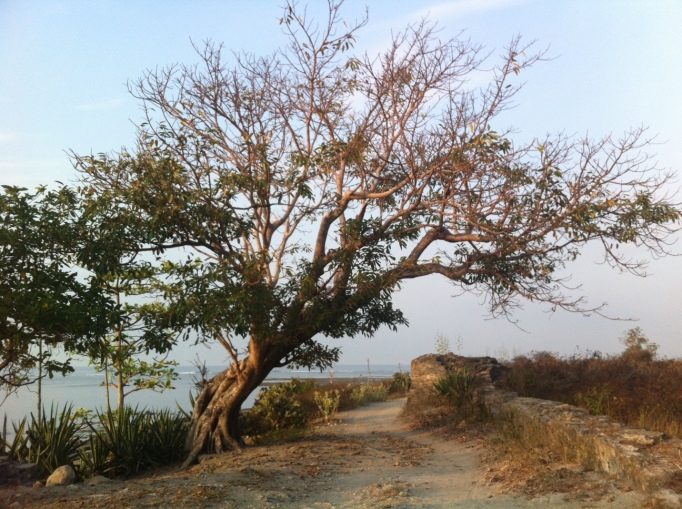East Timor is one of those places totally off the tourist radar, but big with ex-pats and foreign NGO’s. It just came out of a bloody 25 year occupation by the Indoniesian, and its one of the youngest countries in the world at only 12 years old. It was colonized since the 16th century, but as soon as they declared independence from Portugal in 1975, the Indonesians literally moved in right away and caused non-stop grief and oppression until 2000 when the international media and UN finally took notice. The haunting Resistance museum covers the black years, when tens of thousands of Timorese people were killed or starved to death, and hundreds of thousands fled the country as refugees. Today its difficult to see any of these hardships on people’s smiling faces, but maybe they’ve just chosen to forget and instead focus on the happy peaceful days.
Though it’s a long way from a prospering country, they have a rich country, in history, culture and natural resources. Australia’s (still) trying to dig their greedy fingers into their oil and gas reserves, Starbucks (and others) contribute to nearly a quarter of their export economy with coffee beans, and the coast of Timor is jeweled with some of the world’s most pristine coral reef. There are a handful of languages, but most people still speak Tetum, despite Indonesia’s attempt to enforce Bahasa, and the official language of education has been reinstated as Portugese.
I couchsurfed with a Portugese guy who’s job is to start a publishing house. I met many of his ex-pat friends who were mostly teachers for the ‘reference’ schools, and the kids always assumed I was one of them and called me “teacher!” Their smiling faces always impressed me, and many kids also spoke a few words in English. Our conversations would start with “Hello miss, how are you?” although sometimes they called me mister, or sometimes sister. Then the exchange of “what is your name?” and then a fit of giggles when they learned my name and shouted it out in chorus.
It was arid and dry, even the ride fields dusty and grey, so the water buffalo were replaced by cute piggies and piglets. There was no karaoke obsession, but similar only to the Philipines in Asia, Timor Leste is a predominantly Christian country, but their animalistic beliefs have held strong. One of the most striking was their treatment of cats and dogs. Some believe that only the souls of perfect beings can be laid to rest in the mountain tops, so often you’ll see cats with purposely mangled tails, just so we humans don’t have to compete for space with all those cats. Dogs are just large rats, not worth much except meat, not ever pets or even guard dogs.
Crocodiles are the most fascinating animal – the Timorese call them “abo,” which means Grandpa, since they believe they are very sacred animals carrying the souls of their grandfathers. The problem is that there are a lot of crocodiles, and huge salt water crocs, that regularly kill people, taking them in the water, from the shore, or even from their boats. But since they’re such wise, sacred animals, they only kill those who should deserve it, so either the deceased or his/her family has done something wrong. There was the story of one elderly woman who was killed, and a 17 year old boy, probably by the same croc, and the villagers were so furious that they declared the croc a wild crocodile, and killed him when he wouldn’t return the body of the boy. A shaman later came to the village to mediate between the people and the croc, and after some intense chanting, peace has been restored.
I realized that before coming, Timor was one of the more worrying countries I was going to show up to with no plan. Since it was difficult to find information, I arrived with a tabula rasa, and all that I found were pleasant surprises. People were much friendlier here than I remember anywhere else on my trip, and though the roads are tremendously bad (it took 9 hours to drive 190km), traveling around always felt safe. And as long as I stayed away from the sea, I didn’t have to worry about any peace conflicts, since I’m certainly no match to a wild croc and that was about the only dangerous thing I encountered in Timor Leste.





Hi, nice first impression on this beautiful country, thank you. Just one note: those kinky cat tails are found all over Asia and not caused by humans:
http://cat.animalchannel.co.za/2013/06/11/cat-breed-the-bobcat/